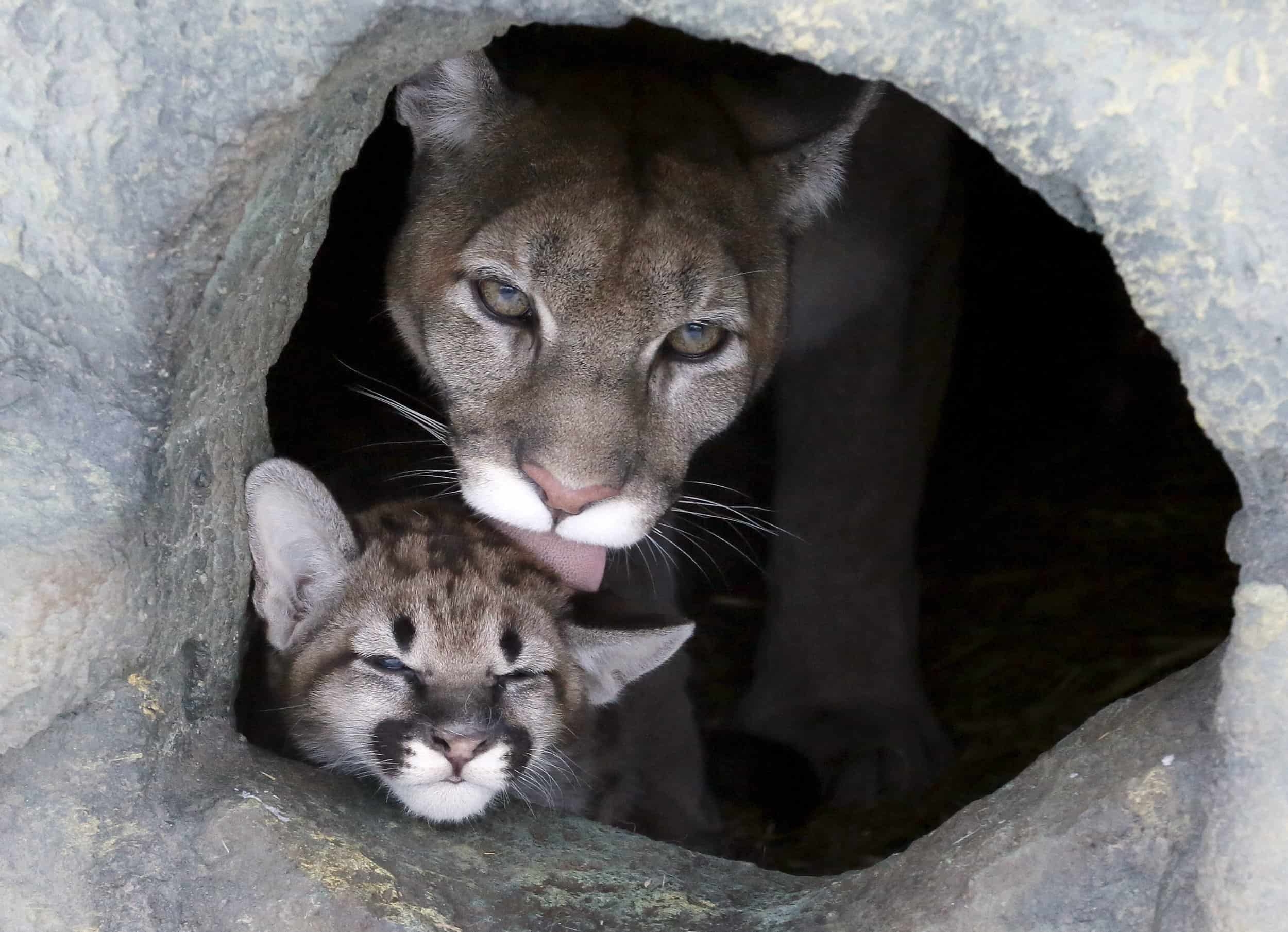Cannington cougar sightings sparks return of ‘rural’ legend the cats were government introduced
Published June 14, 2023 at 4:19 pm

A confirmed sighting of a cougar on a concession road near Cannington in northern Durham Region last week has meant the return of an oft-repeated Ontario rural legend that the big cats were introduced by the Ministry of Natural Resources as a way to control the deer population.
Nothing, said a statement from the ministry, could be further than the truth. “The Ministry of Natural Resources and Forestry has not re-introduced cougars into Ontario,” a spokesman said bluntly.
The cougar sighting on the 11th Concession between Ridge Road and 18A, just south of Cannington (and McCaskill’s Mill Public School) in Brock Township, prompted several other people to report they had seen cougars in the area in recent years, including one sighting on Ridge Road and another near Zephyr. One poster said a mountain lion killed her dog in 2015 while another said one of her horses was attacked.
But what is also coming out on social media platforms – now and over the past decade or so – is the belief that the cougars were introduced in the early 2000s by the provincial government.
- “Did you hear the MNR are releasing cats to control the deer population? It’s all hush-hush so as not to alarm the farmers!
- “They’ve been in the area for years and it was the MNR that put them here.”
- “MNR released pairs of them in Cannington years back to help control the turkey population. Apparently, it didn’t work too well lol.”
- “The MNR was the ones that released them here even when they say they didn’t.”
The rumours go way beyond Durham Region as well.
- “I heard two brothers talking about it at the Canadian tire store in Listowel … I had my truck serviced at the Ford dealership in Listowel and the mechanic asked me if I had seen any cougars. He said ‘the MNR are releasing cougars!’”
- “The word around is that the MNR did release five young male cougars in the Dorset area, which is east of Huntsville and towards Algonquin! The idea being to control the deer population.”
Of course, not all the chatter is high on conspiracy and low on substance. A few, like this poster, had a theory a bit more logic-based.
- “If the MNR had decided to release cougars they would have to make it public knowledge! You cannot just secretly release a ‘super predator’ into any area that has any human habitants!!! I’m thinking it is urban legend from some deer hunters that didn’t have much luck this season!”
Ministry officials believe the cougar spotted near Cannington has been in the area for at least eight years and has never caused any “trouble.”

Most of the Eastern Cougar population in Ontario is believed to be north of the French River because of the remoteness of the habitat, the ministry statement read. There have been some reports from the southern part of the province but “most reported sightings of cougars or their sign, particularly those in southern Ontario, are from species other than cougars. In southern Ontario, the few credible observations of cougars are likely the result of escaped captive animals, or transient cougars passing through.”
There is currently no government cougar monitoring program or studies underway in Ontario but the ministry’s Natural Heritage Information Centre tracks observations of species at risk, such as cougars.
Eastern Cougars were classed as extinct in the USA five years ago and are part of the Endangered Species list in Ontario, so they are well protected and monitored by the Province and considered less of a threat than bears.
They’re also very elusive and very good at staying out of sight, adding to the mystery and rarity of confirmed sightings. It is unknown if the subspecies have always been in Ontario or if it’s their western cousins expanding their range.
This isn’t the first time the ministry has tried to debunk the ‘legend’ and it is likely not going to be the last but the ministry residents to exercise caution around cougars, however, especially if they are with pets or small children.
“Public safety and reducing the potential for conflicts with wildlife are important priorities. If a member of the public has immediate concerns about a personal or public safety situation involving cougars or other wildlife, they should call 911/contact local police service.”
The ministry has some tips if you ever encounter a cougar, or their smaller relatives lynx and bobcat:
- Never approach the animal, especially if it’s near a kill or with young.
- Never offer it food.
- Do not run, a cat’s instinct is to chase.
- If you’re with others, stay together and act as a group.
- Face the animal and talk firmly while slowly backing away.
- Always leave the animal an escape route.
- Do not crouch down or try to hide, instead try to appear larger.
- Do not take your eyes off the animal or turn your back.
- If the animal does not flee, be more assertive by shouting, waving your arms and throwing anything available.






